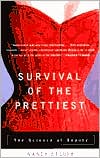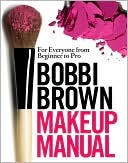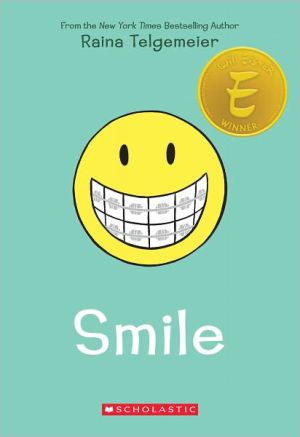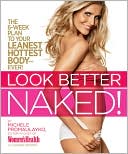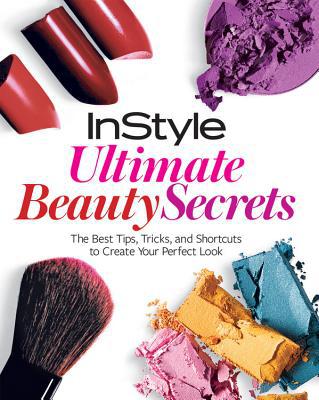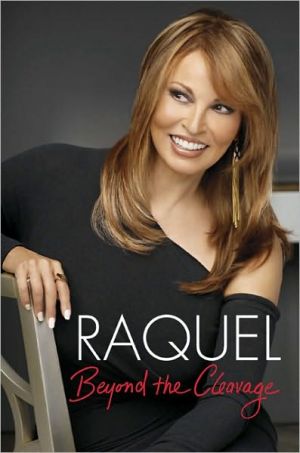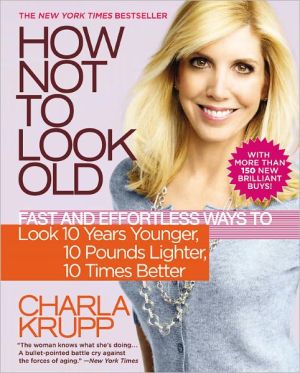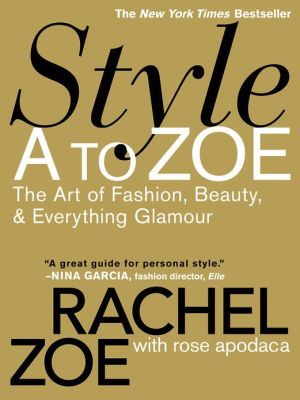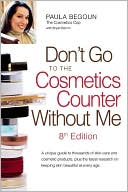Survival of the Prettiest: The Science of Beauty
In this provocative, witty, and thoroughly researched inquiry into what we find beautiful and why, Nancy Etcoff skewers one of our culture's most enduring myths, that the pursuit of beauty is a learned behavior. Etcoff, a faculty member at Harvard Medical School and a practicing psychologist at Massachusetts General Hospital, skewers the enduring myth that the pursuit of beauty is a learned behavior.\ Etcoff puts forth that beauty is neither a cultural construction, an invention of the...
Search in google:
This scientific inquiry into the nature of beauty challenges The Beauty Myth and explains the universal fascination with looks along Darwinian lines. Time Magazine - Anita Hamilton Avoiding ideological rant, Etcoff employs rigorous scientific research and amusing detail to create a great read.
The Nature of Beauty\ Philosophers ponder it and pornographers proffer it. Asked why people desire physical beauty, Aristotle said, "No one that is not blind could ask that question." Beauty ensnares hearts, captures minds, and stirs up emotional wildfires. From Plato to pinups, images of human beauty have catered to a limitless desire to see and imagine an ideal human form.\ But we live in the age of ugly beauty, when beauty is morally suspect and ugliness has a gritty allure. Beauty is equal parts flesh and imagination: we imbue it with our dreams, saturate it with our longings. But to spin this another way, reverence for beauty is just an escape from reality, it is the perpetual adolescent in us refusing to accept a flawed world. We wave it away with a cliché, "Beauty is in the eye of the beholder," meaning that beauty is whatever pleases us (with the subtext that it is inexplicable). But defined this way, beauty is meaningless--as Gertrude Stein once said about her childhood home, Oakland, California, "There is no there there."\ In 1991, Naomi Wolf set aside centuries of speculation when she said that beauty as an objective and universal entity does not exist. "Beauty is a currency system like the gold standard. Like any economy, it is determined by politics, and in the modern age in the West it is the last, best belief system that keeps male dominance intact." According to Wolf, the images we see around us are based on a myth. Their beauty is like the tales of Aphrodite, the judgment of Paris, and the apple of discord: made up. Beauty is a convenient fiction used by multibillion-dollar industries that create images of beauty and peddle them as opium for the female masses. Beauty ushers women to a place where men want them, out of the power structure. Capitalism and the patriarchy define beauty for cultural consumption, and plaster images of beauty everywhere to stir up envy and desire. The covetousness they inspire serves their twin goals of making money and preserving the status quo.\ Many intellectuals would have us believe that beauty is inconsequential. Since it explains nothing, solves nothing, and teaches us nothing, it should not have a place in intellectual discourse. And we are supposed to breathe a collective sigh of relief. After all, the concept of beauty has become an embarrassment.\ But there is something wrong with this picture. Outside the realm of ideas, beauty rules. Nobody has stopped looking at it, and no one has stopped enjoying the sight. Turning a cold eye to beauty is as easy as quelling physical desire or responding with indifference to a baby's cry. We can say that beauty is dead, but all that does is widen the chasm between the real world and our understanding of it.\ Before beauty sinks any deeper, let me reel it in for closer examination. Suggesting that men on Madison Avenue have Svengali-like powers to dictate women's behavior and preferences, and can define their sense of beauty, is tantamount to saying that women are not only powerless but mindless. On the contrary, isn't it possible that women cultivate beauty and use the beauty industry to optimize the power beauty brings? Isn't the problem that women often lack the opportunity to cultivate their other assets, not that they can cultivate beauty?\ As we will see, Madison Avenue cleverly exploits universal preferences but it does not create them, any more than Walt Disney created our fondness for creatures with big eyes and little limbs, or Coca-Cola or McDonald's created our cravings for sweet or fatty foods. Advertisers and businessmen help to define what adornments we wear and find beautiful, but I will show that this belongs to our sense of fashion, which is not the same thing as our sense of beauty. Fashion is what Charles Baudelaire described as "the amusing, enticing, appetizing icing on the divine cake," not the cake itself.\ The media channel desire and narrow the bandwidth of our preferences. A crowd-pleasing image becomes a mold, and a beauty is followed by her imitator, and then by the imitator of her imitator. Marilyn Monroe was such a crowd pleaser that she's been imitated by everyone from Jayne Mansfield to Madonna. Racism and class snobbery are reflected in images of beauty, although beauty itself is indifferent to race and thrives on diversity. As Darwin wrote, "If everyone were cast in the same mold, there would be no such thing as beauty."\ Part of the backlash against beauty grew out of concern that the pursuit of beauty had reached epic proportions, and that this is a sign of a diseased culture. When we examine the historical and anthropological literature we will discover that, throughout human history, people have scarred, painted, pierced, padded, stiffened, plucked, and buffed their bodies in the name of beauty. When Darwin traveled on the Beagle in the nineteenth century, he found a universal "passion for ornament," often involving sacrifice and suffering that was "wonderfully great."\ We allow that violence is done to the body among "primitive" cultures or that it was done by ancient societies, but we have yet to realize that beauty brings out the primitive in every person. During 1996 a reported 696,904 Americans underwent voluntary aesthetic surgery that involved tearing or burning their skin, shucking their fat, or implanting foreign materials. Before the FDA limited silicone gel implants in 1992, four hundred women were getting them every day. Breast implants were once the province of porn stars; they are now the norm for Hollywood actresses, and no longer a rarity for the housewife.\ These drastic procedures are done not to correct deformities but to improve aesthetic details. Kathy Davis, a professor at the University of Utrecht, watched as more than fifty people tried to persuade surgeons in the Netherlands to alter their appearance. Except for a man with a "cauliflower nose," she was unable to anticipate which feature they wanted to alter just by looking at them. She wrote, "I found myself astounded that anyone could be willing to undergo such drastic measures for what seemed to me such a minor imperfection." But there is no such thing as a minor imperfection when it comes to the face or body. Every person knows the topography of her face and the landscape of her body as intimately as a mapmaker. To the outside world we vary in small ways from our best hours to our worst. In our mind's eye, however, we undergo a kaleidoscope of changes, and a bad hair day, a blemish, or an added pound undermines our confidence in ways that equally minor fluctuations in our moods, our strength, or our m ental agility usually do not.\ People do extreme things in the name of beauty. They invest so much of their resources in beauty and risk so much for it, one would think that lives depended on it. In Brazil there are more Avon ladies than members of the army. In the United States more money is spent on beauty than on education or social services. Tons of makeup--1,484 tubes of lipstick and 2,055 jars of skin care products--are sold every minute. During famines, Kalahari bushmen in Africa still use animal fats to moisturize their skin, and in 1715 riots broke out in France when the use of flour on the hair of aristocrats led to a food shortage. The hoarding of flour for beauty purposes was only quelled by the French Revolution.\ Either the world is engaged in mass insanity or there is method in this madness. Deep inside we all know something: no one can withstand appearances. We can create a big bonfire with every issue of Vogue, GQ, and Details, every image of Kate Moss, Naomi Campbell, and Cindy Crawford, and still, images of youthful perfect bodies would take shape in our heads and create a desire to have them. No one is immune. When Eleanor Roosevelt was asked if she had any regrets, her response was a poignant one: she wished she had been prettier. It is a sobering statement from one of the most revered and beloved of women, one who surely led a life with many satisfactions. She is not uttering just a woman's lament. In Childhood, Boyhood, Youth, Leo Tolstoy wrote, "I was frequently subject to moments of despair. I imagined that there was no happiness on earth for a man with such a wide nose, such thick lips, and such tiny gray eyes as mine.... Nothing has such a striking impact on a man's development as his appearance, and not so much his actual appearance as a conviction that it is either attractive or unattractive."\ Appearance is the most public part of the self. It is our sacrament, the visible self that the world assumes to be a mirror of the invisible, inner self. This assumption may not be fair, and not how the best of all moral worlds would conduct itself. But that does not make it any less true. Beauty has consequences that we cannot erase by denial. Beauty will continue to operate--outside jurisdiction, in the lawless world of human attraction. Academics may ban it from intelligent discourse and snobs may sniff that beauty is trivial and shallow but in the real world the beauty myth quickly collides with reality.\ This book is an inquiry into what we find beautiful and why--what in our nature makes us susceptible to beauty, what qualities in people evoke this response, and why sensitivity to beauty is ubiquitous in human nature. I will argue that our passionate pursuit of beauty reflects the workings of a basic instinct. As George Santayana has said, "Had our perceptions no connection with our pleasures, we should soon close our eyes to this world .--.--. that we are endowed with the sense of beauty is a pure gain." My argument will be guided by cutting-edge research in cognitive science and evolutionary psychology. An evolutionary viewpoint cannot explain everything about beauty, but I hope to show you that it can help explain a good many things, and offer a perspective on the place of beauty in human life.\ Beauty as Bait\ Many people have an idyllic conception of childhood as a time when beauty does not matter. Listen to children taunt and tease each other in a schoolyard--shrimp, squirt, four eyes, fatso--to quickly disabuse yourself of that notion. Children gravitate to beauty. One of photographer Richard Avedon's first snapshots was of his seven-year-old sister Louise. The nine-year-old Avedon was so entranced by her that he taped the negative to his skin and had the sun burn it into his shoulder. Her oval face, dark hair, big eyes, and long throat became "the prototype of what I considered to be beautiful. She was the original Avedon beauty." His later photographs of models Dovima, Suzy Parker, Dorian Leigh, and Carmen Dell'Orefice "are all memories of Louise."\ Children are sensitive to beauty from a very early age, but how and when do they acquire their preferences? The popular wisdom is that children learn beauty preferences through acculturation. Perhaps their parents foist certain tastes upon them, then peers rebelliously revise the aesthetics, and pop culture finally fine-tunes it. As Robin Lakoff and Raquel Scherr wrote in their 1984 book Face Value, "Beauty is not instantly and instinctively recognizable: we must be trained from childhood to make those discriminations."\ But psychologist Judith Langlois is convinced that no lessons are required: we are born with preferences and even a baby knows beauty when she sees it. Langlois collected hundreds of slides of people's faces and asked adults to rate them for attractiveness. When she presented these faces to three- and six-month-old babies, they stared significantly longer at the faces that adults found attractive. The babies gauged beauty in diverse faces: they looked longer at the most attractive men, women, babies, African-Americans, Asian-Americans, and Caucasians. This suggests not only that babies have beauty detectors but that human faces may share universal features of beauty across their varied features.\ Langlois is quick to point out that infants show preferences for beautiful unfamiliar faces. It is unlikely that an infant's behavior toward his or her caregivers is influenced by their facial beauty, given the importance of attachment to the baby's survival. Nor is she suggesting that babies with attractive mothers have a special eye for beauty. Babies looked longer at attractive faces regardless of the mother's attractiveness.\ The notion that infants come prewired with beauty detectors was not the prevailing theory when Judith Langlois began her research ten years ago. The idea that an infant would be peering out at the world with the eyes of a neonate beauty judge is downright discomfiting: even they notice looks? But her results are part of a growing body of evidence that infants share a universal set of sensual preferences. They prefer to look more at symmetrical patterns than at asymmetrical ones, and to touch soft surfaces rather than rough ones. By four months of age they prefer consonant to dissonant music. When psychologists Jerome Kagan and Marcel Zentner played dissonant melodies to babies, they wrinkled their noses in disgust. Kagan and Zentner felt that they were witnessing the first signs of a preference for easy listening and mellifluous crooning. We can learn to love dissonance, but it is an acquired taste.\ Babies pay close attention to the human face. Within ten minutes of emerging from the mother's body, their eyes follow a line drawing of a face. By day two they can discriminate their mother's face from a face they have never seen before. The next day they begin mimicking facial actions: stick out your tongue at a newborn and the baby will do the same. Each newborn orients immediately toward whatever is biologically significant, and topmost will be people who ensure her survival.\ Babies look almost as long at a person's eyes as they do at the whole face, and see there much of what they need to know. The movements of the eyes and of the muscles surrounding the eyes, the changes in pupil size, and the gleam or dullness in our eyes express nuances of feeling. The small individual differences in distances around the eyes created by the facial bone structure is one of the most enduring parts of our visual signature, and as unique as fingerprints. Automatic face recognition systems guided by computers recognize faces better from the eyes alone than from the nose or mouth alone. Computers learning to detect faces from nonfaces are most easily fooled by interference with the eye regions. This is why masking only the area around the eyes has proved an effective disguise from Don Juan in the fourteenth century to the Lone Ranger in the twentieth.\ If babies see someone looking at them, they look back, and usually they smile. Their interest piqued, they will look up to three times as long at a face looking at them as at a face looking away. Unlike prey animals such as rabbits and deer which have panoramic, surround vision, humans, like hawks and leopards and other predators, look precisely at what they are thinking about. This is why babies come equipped with mechanisms to detect direction of gaze, and why the human eye may have evolved its distinctive appearance. Unlike most animals, which have sclera that darken with age, humans retain white sclera all of their lives. The whites of the eyes help us gauge where eyes are looking and give us a good idea of what has captured other people's attention and what might be on their minds.\ An animal stalked by lions, which can see prey from a mile away, would not be greatly benefited by seeing the whites of their eyes. By then, it's all over. But for humans living in close proximity and dependent on one another for survival, direction of gaze is an effective form of communication, whether in the form of the predatory gaze, the beseeching look, or the look of love.\ The newborn baby's preferences are formes frustes of adult preferences. Babies turn into adults who like symmetry and harmony and things that feel smooth; they are riveted by the sight of the human face, and aroused when eyes meet theirs. The three-month-old who stares at beautiful faces grows up to be the usual person whose head is turned by the sight of beauty and who can fall in love by looking. When babies fix their stare at the same faces adults describe as highly attractive, their actions wordlessly argue against the belief that culture must teach us to recognize human beauty.\ The Injustice of the Given\ Whether or not the beautiful is good, beauty seems to bring out goodness in others. In one psychologist's study, seventy-five college men were shown photographs of women, some of whom were very attractive and others less so. They were asked to select the person they would be most likely do the following for: help move furniture, loan money, donate blood, donate a kidney, swim one mile to rescue her, save her from a burning building, and even jump on a terrorist hand grenade. The men were most likely to volunteer for any of these altruistic and risky acts for a beautiful woman. The only thing they seemed reluctant to do for her was loan her money.\ Answers to psychologists' questions about hypothetical situations may have little to do with real behavior. But when put to the test, at least in small ways, people seem to confirm what the college boys say. In several staged experiments, psychologists have tested people's honesty and altruism toward good-looking and plain-looking people and find that their good deeds are not doled out evenly. For example, in one study a pretty or an ugly woman approaches a phone booth and asks the occupant, "Did I leave my dime there?" (There is a dime in the phone booth.) Eighty-seven percent of people return the dime to the good-looking woman, but only sixty-four percent return the dime to the ugly woman. In another study, two women stand by a car with a flat tire in the roadway: the good-looking one gets rescued first.\ People are more likely to help attractive people even if they don't like them. In another staged experiment, an attractive or unattractive woman gave men compliments on their work or criticized it. Afterward, the men were asked how much they liked the woman. They particularly liked the attractive woman who praised them, and liked least the attractive woman who criticized them. But asked to volunteer more time, the men gave it to the good-looking woman, even when he didn't like her. As the psychologists wrote, her attractiveness attracted. Attractiveness attracts even in situations where there is no chance of actually meeting the recipient of one's favors. In yet another study, completed (bogus) college applications were left in Detroit airports. A note attached to them suggested that the applications were given to fathers who had accidentally left them behind. Each had the identical application answers, but each had a different photograph attached. People were much more likely to mail the applications of the better-looking applicants.\ Interestingly, people are less likely to ask good-looking people for help. This is particularly true for men with good-looking women, but it is also true for both men and women with good-looking members of their own sex (it is less true for women asking good-looking men for help). But as evolutionary psychologists Leda Cosmides and John Tooby have shown, people keep a watchful eye on who has done what for whom. Our efforts to please good-looking people with no expectation of immediate reward or reciprocal gesture are one way we reinforce beauty as a form of status, not unlike being born into the nobility or inheriting wealth. Beauty represents what writer Jim Harrison has called "the injustice of the given."\ The high status of beauty is one reason why it is a subject fraught with such heated emotions. Didn't democratic societies ban the aristocracy and level the playing field? Perhaps this is also why we are so easily persuaded by the idea that beauty is attainable through the usual democratic means--hard work and money. If it confers elite status, then we must make it an elitism based on effort and achievement, not a priori advantage. Historian Lois Banner has chronicled "the democratic rhetoric of beauty experts in the early twentieth century," which insisted that "every woman could be beautiful." She suggests that such campaigns were dangerous for women because they held up an unattainable ideal. Estee Lauder's successful campaigns included her exhortations that "there are no homely women only careless women .--.--. you have to want it [beauty] very much and then help it along with some well-chosen products." Paradoxically, the arguments of twentieth-century beauty experts have often unwittingly linked beauty with goodness. Women who were dissatisfied with what they saw in the mirror now felt not only unattractive but lazy, inept, or lacking the inner beauty which was supposed to shine forth with good habits and good concealer.\ Happiness\ As Ben Franklin said, "Human felicity is produced not so much by great pieces of good fortune that seldom happen as by the little advantages that occur every day." As we have seen, great-looking people are afforded those little advantages all of their lives, so they must be happier.\ Beauty, in fact, does not bring much extra in the way of happiness. Psychologists Ed Diener and David Myers have spent a lot of time trying to understand what makes people happy. They focus on "subjective well-being," a state of mind in which a person feels very positive, seldom feels negative, and has an overall sense of satisfaction with life. Ed Diener finds that good-looking men have a somewhat greater sense of well-being and feel a bit happier than other men. A woman's beauty sometimes makes her a bit happier than other women, but it can also make her more unhappy. The overall effect for both sexes is marginal. The biggest effect is on satisfaction with one's romantic life. Here the good-looking are happier. But somehow this does not lead to greater overall life satisfaction.\ Why doesn't beauty, that brings so many advantages, bring more happiness? Diener and Myers believe that happiness has more to do with personal qualities such as optimism, a sense of personal control, self-esteem, ability to tolerate frustration, and feelings of comfort with and affection for people than with looks or money. They note that it is human nature to keep adjusting expectations according to circumstances--the more we get, the more we want since we are always comparing ourselves with people who have more. As psychologist Timothy Miller observes, "No instinct tells us that we have accumulated enough status, wealth, or love.... To the contrary--such an instinctive mechanism would contradict the basic principles of evolution." The good-looking compare themselves with the even better-looking, the rich with the even richer. Automatically running after what you don't have (yet) may give you a competitive edge, but taken to unreasonable extremes, it can lead to lack of self-acceptance and lack of joy\ . The key to happiness is being able to occasionally override the more-is-better attitude and appreciate and feel gratitude for what you have.\ Desire is unquenchable. The psychoanalyst Edith Jacobson has written about beautiful female patients isolated by their beauty. Catered to all of their lives, they become convinced that they can get whatever they want and whomever they want, a stance bound to lead to frustration at each rebuff and setback. As Betrand Russell wrote, "He forgets that to be without some of the things you want is an indispensable part of happiness."\ Studies of twins suggest that happiness may be partly under the control of the genes. Behavioral geneticist David Lykken studied fifteen hundred pairs of twins, comparing identical twins who share one hundred percent of their genes to fraternal twins, who are no more similar genetically than other siblings. Lykken and coauthor Auke Tellegen concluded that people are born with a "set point" for happiness, an equilibrium point to which their mood returns after brief fluctuations. In other words, some people will have natural tendencies to worry or brood while others will be sanguine. On a recent episode of the Charlie Rose show, the host chided actor Liam Neeson for not "being on top of the world. How," he asked, "could you not be ecstatically happy, given your career success, your marriage, your life?" Neeson did not say he was unhappy, but just that he was a worrier. The many happy turns in his life had not changed that.\ And there is self-esteem, one ingredient of happiness that is more tightly linked to how we see ourselves than to how others see us. As Eleanor Roosevelt remarked, "No one can make you feel inferior without your consent." Our beauty as others judge it is linked to social ease, but it is not linked strongly to self-esteem. Even if others think we are beautiful, we may not if we are constantly comparing ourselves to the even more beautiful. But our beauty as we see it is linked to self-esteem. Ed Diener speculates that "it seems plausible that happier people tend to perceive themselves as somewhat more attractive than objective ratings might indicate." Happier individuals also enhance their appearance more with clothing, makeup, jewelry, and so on than do unhappy people, thereby maximizing their assets.\ Beauty has a downside. People assume that the beautiful may make less faithful partners and may be more likely to seek a divorce. Beautiful women may be seen as less likely to make good mothers, and beautiful men may get questioned about their sexual orientation, no matter what their preference. And beauty can be damn distracting. William Butler Yeats apologized to Anne Gregory: "Only God, my dear, could love you for yourself alone, and not your yellow hair."\ When people judge integrity, sensitivity, and concern for others from facial appearance, beauty has little power. A face radiating kindness and sympathy may not be beautiful, and a beautiful face may look aloof, blank, haughty, or self-absorbed without losing its beauty. As Montaigne said, "There are propitious physiognomies; and in a crowd of enemies all unknown to you, you will immediately pick one rather than another to whom you surrender and to whom you will entrust your life and not precisely from considerations of beauty." But even Montaigne concludes, "A face is a poor guarantee; nevertheless it deserves some consideration." Beauty may bring small advantages, even here.\ But the downsides are not inconsiderable, particularly for a woman. She may be favored in a million small ways but if what's important to her is to be seen as a good mother, to succeed in a high-level profession, and to be honored for her kindness and integrity, beauty may either be irrelevant or it may even interfere with her chances to be seen as she is, and wants to be. Beauty is not a sure road to happiness.\ Despite all this, no one offered a chance to be more beautiful would turn it down. As vaudeville star Sophie Tucker once said, "I've been poor and I've been rich and rich is better."
1Introduction: The Nature of Beauty12Beauty as Bait293Pretty Pleases554Cover Me895Feature Presentation1316Size Matters1677Fashion Runaway2058Conclusion231Notes247References289Photos and Illustrations311Acknowledgments313Index315
\ Anita HamiltonAvoiding ideological rant, Etcoff employs rigorous scientific research and amusing detail to create a great read. \ — Time Magazine\ \ \ \ \ Boston GlobeIn her book Survival of the Prettiest: The Science of Beauty, Etcoff challenges the notion that the media has created our cultural fascination for good looks. Instead she argues that there are evolutionary reasons why cultures - not just in the United States - place so much value on appearance. And she forgives our vanity by demonstrating that beauty isn't just in the eye of the beholder, it's part of the beholder's biology.\ \ \ Spin MagazineAs scientist/psychologist Nancy Etcoff argues in Survival of the Prettiest, physical attractiveness is a basic survival skill. Etcoff sets out to prove that the blame cannot simply be laid at the feet of such institutions as Revlon, Kate Moss, and the American Society of Plastic and Reconstructive Surgeons. Instead, she argues, we're hard-wired to seek potential mates who are virile, fertile, and at least 85 percent fat-free. In short, looks are everything.\ \ \ \ \ Publishers WeeklyIn riveting style, Etcoff, a psychologist at Harvard Medical School, demolishes the belief that beauty is a cultural construct, arguing instead "that beauty is a universal part of human experience, and that it provokes pleasure, rivets attention, and impels actions that help ensure the survival of our genes." By drawing widely from anthropological, psychological, biological and archeological literature, Etcoff discerns surprising similarities in the ways humans have perceived and responded to beauty across diverse cultures throughout the millennia. For example, cross-cultural research comparing two isolated Indian tribes in Venezuela and Paraguay to people in three Western cultures demonstrated a remarkable similarity in what is considered beautiful. And evidence that red pigments were used as lipstick as long ago as 5000 B.C. suggests that media images are not the sole reason that "in the United States more money is spent on beauty than on education or social services." The most important message in this book is that we cannot ignore our evolutionary past when attempting to understand our current behavior, even as we should recognize that we need not be slaves to our genes. Topics as wide-ranging as penis- or breast-enlargement surgery and the basics of haute couture are treated with wit and insight. Etcoff's arguments are certain to initiate a great deal of discussion.\ \ \ \ \ KLIATTEtcoff, a psychologist, covers some of the same topics as McNeill (see review below) in this provocative book on "the science of beauty." For instance, she too examines topics such as acne, eyes, mouths, and noses; like McNeill, she integrates scientific analysis, anthropological observation, literature, and anecdote, but Etcoff's stance on all this is a more controversial one. She certainly supports her premise—that the pursuit of beauty, and definitions of beauty, are not learned, but somehow hard-wired—with a breathtaking, fascinating array of detail. This reviewer (and her 17-year-old daughter) both found the book to be spellbinding, cover-to-cover, but agreed on the importance of any reader's recognizing the author's bias toward biological determinism. The idea that the search for beauty is part of some biologically determined drive is far from a given—but that is what makes this book such a potentially good springboard for discussion. Survival of the Prettiest would be a good resource for a health unit, an interdisciplinary unit, a women's studies class—or as companion reading with McNeill's book in a literature circle discussion. (Note: Not surprisingly, given the book's topic, references to sex and sexuality are frequent.) KLIATT Codes: SA—Recommended for senior high school students, advanced students, and adults. 1999, Random House/Anchor, 325p, notes, index, 21cm, 98-41332, $14.00. Ages 16 to adult. Reviewer: Gloria Levine; Freelance Education Writer, Potomac, MD January 2001 (Vol. 35 No. 1)\ \ \ \ \ BooknewsThe author is a psychologist. She explains the nature of human beauty, including what makes a face beautiful from a scientific perspective. Other factors dealt with include: the fascination with fashion magazines, weight, blondes, high heels, and coifed hair, as well as how sexual preference is guided by ancient rules. Annotation c. Book News, Inc., Portland, OR (booknew.com)\ \ \ \ \ Entertainment Weekly...[S]prightly, spunky, well-written....irresistibly persuasive, well-timed, fun-fact-filled...\ \ \ \ \ Karen LehrmanEtcoff must be commended for (one hopes) putting the kibosh at last on the notion that attractiveness is determined by men out to keep women ensconced in a beauty rat race....[E]ven the uber-hip [may] realize that the future they may be most affecting with their anti-esthetic is their own.\ — The New York Times Book Review\ \ \ \ \ Stephen BatesIn chatty if quote-heavy prose....she succeeds in engagingly charting the origins and the impacts of our undemocratic aristocracy of beauty.\ — WQ: The Wilson Quarterly\ \ \ \ \ Kirkus ReviewsIs beauty truth? Skin deep? A cultural relative? All of these possibilities and more are probed in this scholarly disquisition on the nature of beauty by a Harvard Medical School psychologist. The bottom line is that the idea of beauty is biologically based, and it's all about sex. Across all cultures (and many species), the survival of one's genes is dependent on choosing a partner who is fit-and looks it: a male who can provide superior sperm or a potential mama who can and will do well in the caretaking business. For men, the unbeatable combination in a female may be youthful looks, shining hair, pale unblemished cheeks that can blush with ease, up-pointing, rounded breasts, and an hourglass figure-all part of a gestalt read as nubile and not already saddled with offspring. If the face is also symmetrical, and does not deviate too far from average, it may be judged beautiful and complete the formula for the ideal mate. Rather than support one formula over another for ideal beauty, Etcoff says rhat their very existence points to the high regard cultures have paid to beauty. And pay they do: with surgery, scarification, tattoos, cosmetics, nose rings, earrings, and the rest. Indeed, "the rest" forms a sizable subtext of the book as Etcoff reviews the trends for body shaping, implants, wigs, crinolines, high heels, perfumes, and all manner of artful dodges designed to make the deceiver irresistible. How those trends play out in today's world of maxi-thin, maxi-tall runway models, anorexic teenagers, and adults obsessed with obesity also come up for discussion. In the end Etcoff wisely suggests that to focus on beauty and to want to attain it is not a sin; we should relax andenjoy it as part of our genetic heritage. But perhaps even more wisely, she notes that that is not all there is to beauty. She ends with a comforting anecdote about George Eliot, whom Henry James described as "magnificently ugly."\ \
